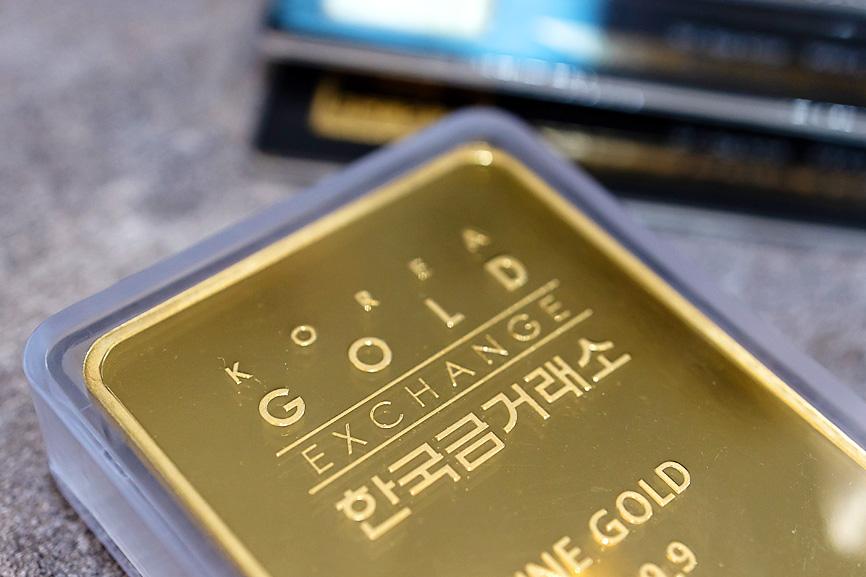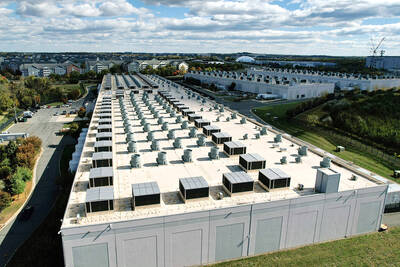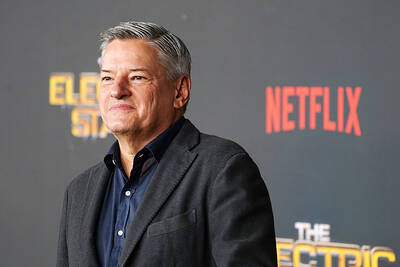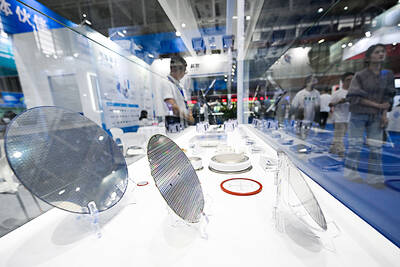Gold posted its biggest weekly gain since July 2020 as the war in Ukraine fueled demand for haven assets.
Investors are assessing the economic fallout from Russia’s invasion of its neighbor, which is disrupting flows of energy, grains and metals.
The resulting surge in oil prices has stoked concerns about global growth and inflation risks.

Photo: Bloomberg
Investors have sought out bullion amid the uncertainty, with holdings in exchange-traded funds backed by the metal climbing to the highest since March last year and hedge fund managers boosting their net bullish gold bets to a 19-month high.
Gold prices extended gains on Friday after a US payrolls report showed that wage growth slowed even as hiring boomed last month. The figures might offer some respite from strong inflationary pressures as the US Federal Reserve gets set to raise interest rates.
The metal “is in a sweet spot for the time being as traders certainly want to have exposure to gold given the war situation in Ukraine,” Ava Trade chief market analyst Naeem Aslam said. Still, the jobs data “has confirmed that the Fed has the green light to increase the interest rate and this is likely to keep the gold price on a tight leash.”
Spot gold on Friday rose 1.7 percent to US$1,972.06 an ounce in New York for an about 4.2 percent weekly gain, the biggest since July 2020.
Bullion for April delivery increased 1.6 percent to settle at US$1,966.60 on the Comex.
Spot palladium advanced 8 percent, topping US$3,000 for the first time since May last year on concerns over potential supply disruptions. The metal is up 27 percent this week. Russia produces about 40 percent of the metal mined globally.
Silver and platinum also surged.
Commodity prices soared the most on record this week as Russia’s invasion of Ukraine threatens key supplies of energy, crops and metals that were already tight as major economies emerged from the COVID-19 pandemic.
The Bloomberg Commodity Spot Index, which tracks 23 futures contracts, climbed 13 percent in the week that ended on Friday. That is the most in data going back to 1960.
Russia’s growing isolation has left traders rushing to secure alternatives to the country’s raw materials, sparking fears of prolonged shortages and accelerating global inflation.
The sanctions, coupled with shipping disruptions in the Black Sea, have brought trade deals with the country to a virtual standstill. Russia is a major supplier of crude, natural gas, grains, fertilizers and metals such as aluminum.
Russia and Ukraine also supply more than one-quarter of world wheat exports, one-fifth of corn sales and a similar share of barley shipments, plus about 80 percent of sunflower oil cargoes.
Europe depends on Russia for about one-quarter of its crude oil and one-third of its natural gas. Russian aluminum typically accounts for about 10 percent of US imports.

The demise of the coal industry left the US’ Appalachian region in tatters, with lost jobs, spoiled water and countless kilometers of abandoned underground mines. Now entrepreneurs are eyeing the rural region with ambitious visions to rebuild its economy by converting old mines into solar power systems and data centers that could help fuel the increasing power demands of the artificial intelligence (AI) boom. One such project is underway by a non-profit team calling itself Energy DELTA (Discovery, Education, Learning and Technology Accelerator) Lab, which is looking to develop energy sources on about 26,305 hectares of old coal land in

Taiwan’s exports soared 56 percent year-on-year to an all-time high of US$64.05 billion last month, propelled by surging global demand for artificial intelligence (AI), high-performance computing and cloud service infrastructure, the Ministry of Finance said yesterday. Department of Statistics Director-General Beatrice Tsai (蔡美娜) called the figure an unexpected upside surprise, citing a wave of technology orders from overseas customers alongside the usual year-end shopping season for technology products. Growth is likely to remain strong this month, she said, projecting a 40 percent to 45 percent expansion on an annual basis. The outperformance could prompt the Directorate-General of Budget, Accounting and

Netflix on Friday faced fierce criticism over its blockbuster deal to acquire Warner Bros Discovery. The streaming giant is already viewed as a pariah in some Hollywood circles, largely due to its reluctance to release content in theaters and its disruption of traditional industry practices. As Netflix emerged as the likely winning bidder for Warner Bros — the studio behind Casablanca, the Harry Potter movies and Friends — Hollywood’s elite launched an aggressive campaign against the acquisition. Titanic director James Cameron called the buyout a “disaster,” while a group of prominent producers are lobbying US Congress to oppose the deal,

Two Chinese chipmakers are attracting strong retail investor demand, buoyed by industry peer Moore Threads Technology Co’s (摩爾線程) stellar debut. The retail portion of MetaX Integrated Circuits (Shanghai) Co’s (上海沐曦) upcoming initial public offering (IPO) was 2,986 times oversubscribed on Friday, according to a filing. Meanwhile, Beijing Onmicro Electronics Co (北京昂瑞微), which makes radio frequency chips, was 2,899 times oversubscribed on Friday, its filing showed. The bids coincided with Moore Threads’ trading debut, which surged 425 percent on Friday after raising 8 billion yuan (US$1.13 billion) on bets that the company could emerge as a viable local competitor to Nvidia